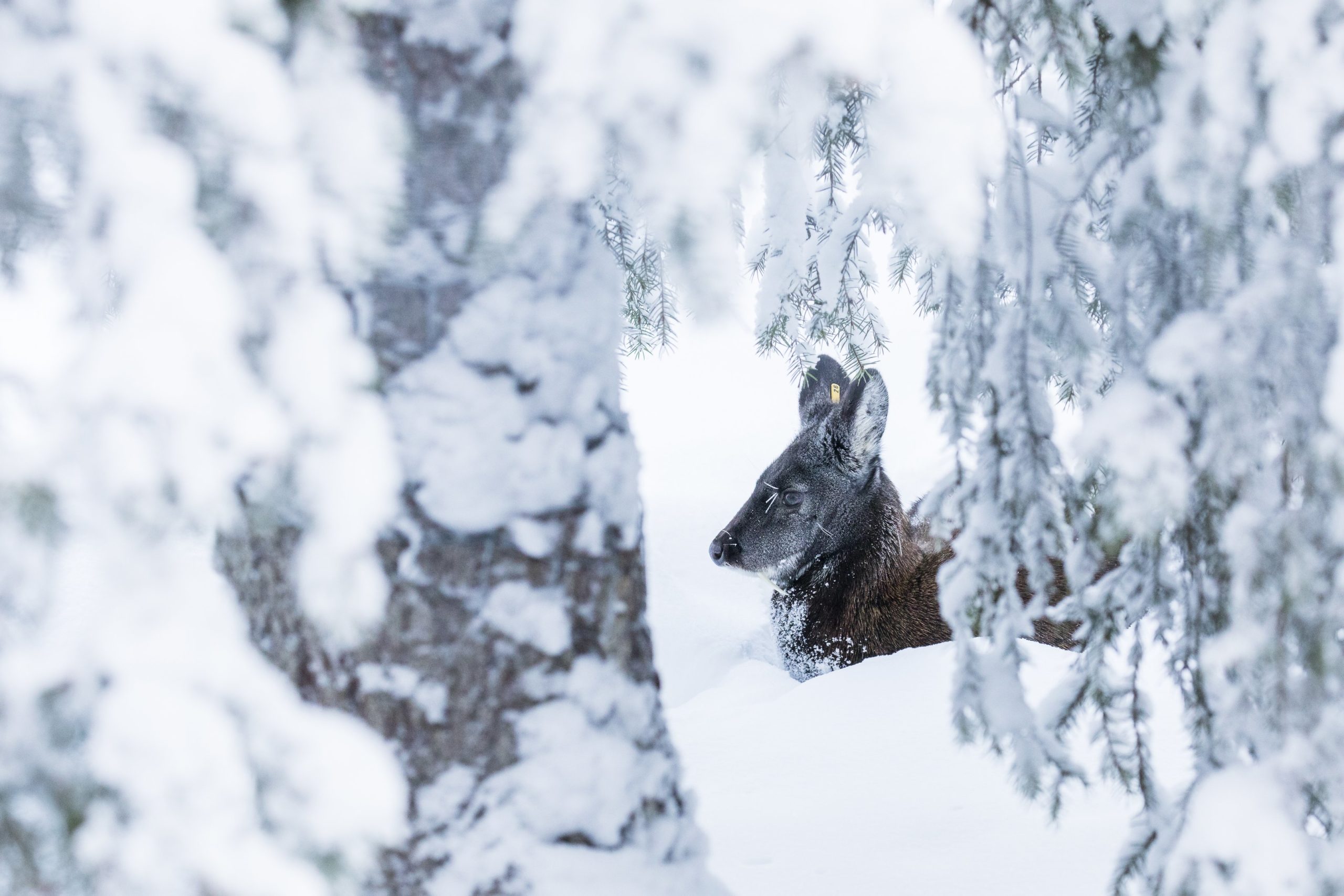
Siberian musk deer
LIVING HABITS
The Siberian musk deer can be found on the taigas in Siberia and in Mongolia. The musk deer prefer mountain forests and are well adapted to snowy surroundings. In the winter the musk deer feed mainly on lichen, but in the summer they also eat grass and tree-leaves. When searching for nutrition, the musk deer may climb to the heights of up to 3-4 metres on tilted tree trunks. The Siberian musk deer is a solitary animal, but may also live in small herds of up to three individuals.
PROTECTION
The Siberian musk deer is an endangered species. Their greatest threat is poaching. The name musk deer refers to musk gland; the secretion, musk, is one of the most expensive animal products. Musk is used in oriental medicine and as perfume. The protection of habitats, population research, education and the development of musk substitutes are the most important conservation methods. There are only less than 20 musk deer in a few European zoos.
ADAPTING TO WINTER
The musk deer boasts a very warm winter fur. Like many arctic mammals, the fur has a hollow guard hair. In spite of its small size, the musk deer moves very nimbly in the snow.
Siberian musk deer
Moschus moschiferus
Class: Mammalia – Mammals
Order: Artiodactyla – Cloven-Hoofed Animals
Family: Moschidae – Muskoxen
Size: Weight: 10-15kg, stands at 40-60cm at the withers.
Breeding: Heat: December-March. Gestation: 6 months, offspring 1-3 at a time, weaning of the baby in 3-4 months. Sexual maturity in 15-17 months.
Lifespan: 10–14 years.


Did you know…
Did you know that the male Siberian musk deer boasts especially long fangs, up to 10 centimetres? They use them to fight for their territory.




